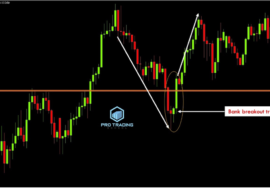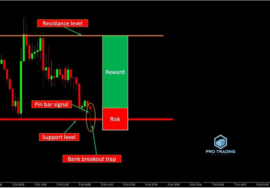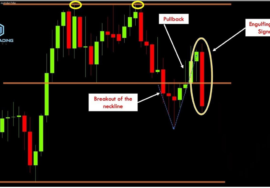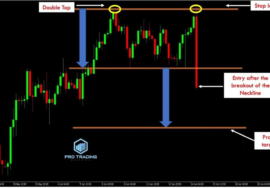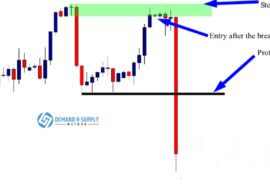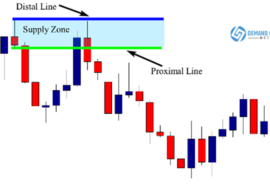
How to Use Fibonacci Retracement Levels to Identify Golden Zones
Scientists have discovered that human decision-making, particularly in groups, often follows a unique pattern that aligns with the 61.8% ratio, known as “the golden mean,” which is derived from the Fibonacci number sequence.
In financial markets, many trading decisions made by participants mirror this sequence. Therefore, if we can identify this ratio on a chart, we can anticipate how market participants will react when the market approaches this level.
Our strategy revolves around combining supply and demand zones with the 61.8% and 50% Fibonacci retracement levels. This approach is highly effective for two main reasons:
- Supply and Demand Zones: When you identify strong supply and demand zones, you are essentially tracking the footprints of banks and financial institutions. If a bank makes a significant purchase at a particular level, the price is likely to reverse when the market retests that level.
- Fibonacci Ratios: The 61.8% and 50% Fibonacci retracement levels govern the collective trading decisions of banks and financial institutions. By understanding this, you can pinpoint high-probability entry points in the market.
Let’s look at an example using the EUR/USD 4H chart:

In the chart, you can see two important supply zones that have formed. These zones indicate where banks and financial institutions have placed their orders and where the market is likely to reverse. Now, let’s apply the Fibonacci retracement tool to this chart to identify the 61.8% and 50% levels.

As shown, the Fibonacci retracement tool reveals that the second supply zone aligns with the 61.8% and 50% Fibonacci retracement levels. This gives us two critical pieces of information: a supply zone based on the strategies of banks and financial institutions, and the 61.8% Fibonacci ratio that influences their collective trading decisions. Thus, this supply zone is both technically and mathematically robust.
Now, observe what happens next:

When the market approached the supply zone between the 61.8% and 50% Fibonacci retracement levels, the price dropped, confirming it as a golden zone.
A golden zone is a supply or demand zone that coincides with the 61.8% or 50% Fibonacci retracement level. These zones are highly reliable because they reflect a blend of institutional trading behavior and the natural human inclination toward the golden ratio in collective decision-making.
However, since it’s uncertain whether the market will continue rising to test the first supply zone, a confirmation pattern is necessary before deciding to trade. In this case, an inside bar false breakout pattern signaled a likely downward move.
Let’s explore a demand golden zone with another example:

The chart shows a demand zone formed in an uptrend. While it’s a clear demand zone, applying the Fibonacci retracement tool will determine if it qualifies as a golden zone.

In the chart with Fibonacci retracement levels applied, the second demand zone aligns with the 61.8% Fibonacci retracement level, making it a significant zone to watch. When the market approaches this zone, a confirming candlestick pattern, such as a bullish reversal, should be sought before entering a trade.

As illustrated, the formation of two bullish pin bars within the demand zone confirmed its status as a golden zone, indicating a likely price reversal.
Now that you understand that a golden zone is a supply or demand zone corresponding to the 61.8% Fibonacci retracement level, it’s important to note that these zones can also work effectively with the 50% Fibonacci retracement level. Such levels are considered golden zones as well because the 50% Fibonacci retracement level significantly influences the trading decisions of market participants. As a result, any supply or demand zone that aligns with the 50% Fibonacci retracement level is also regarded as a golden zone. You can also test this strategy with your cryptocurrency trades, you can Buy Crypto or Hodl Crypto



